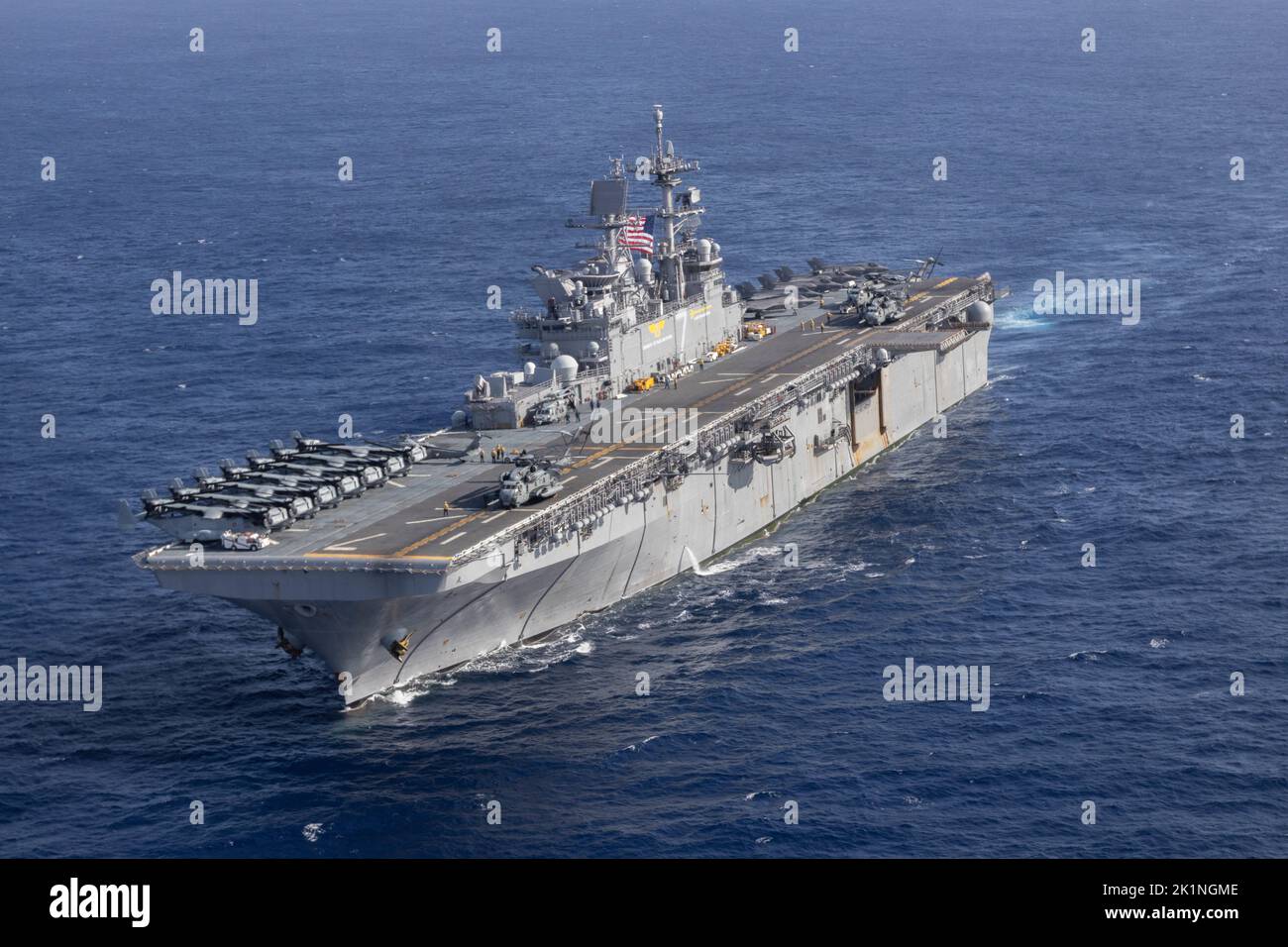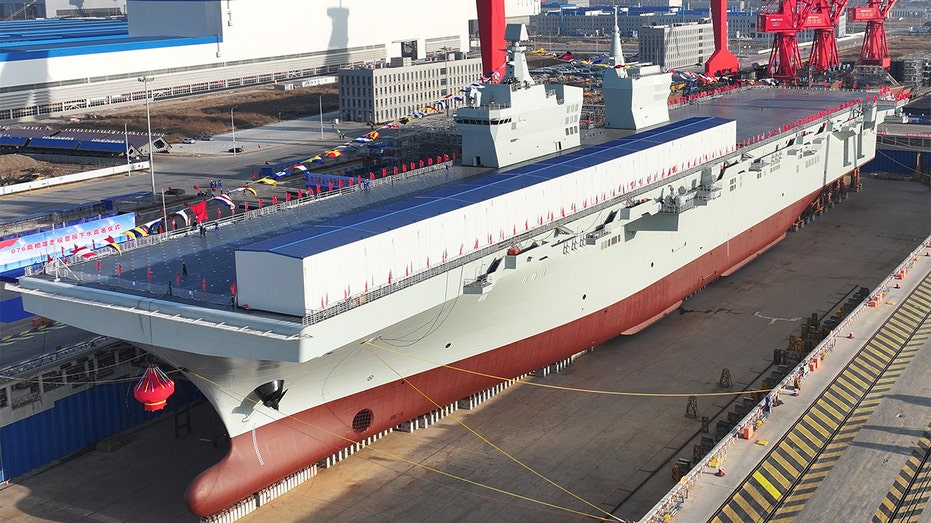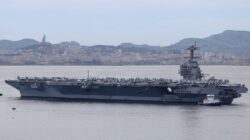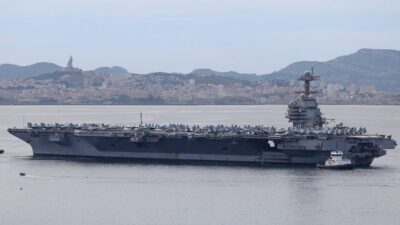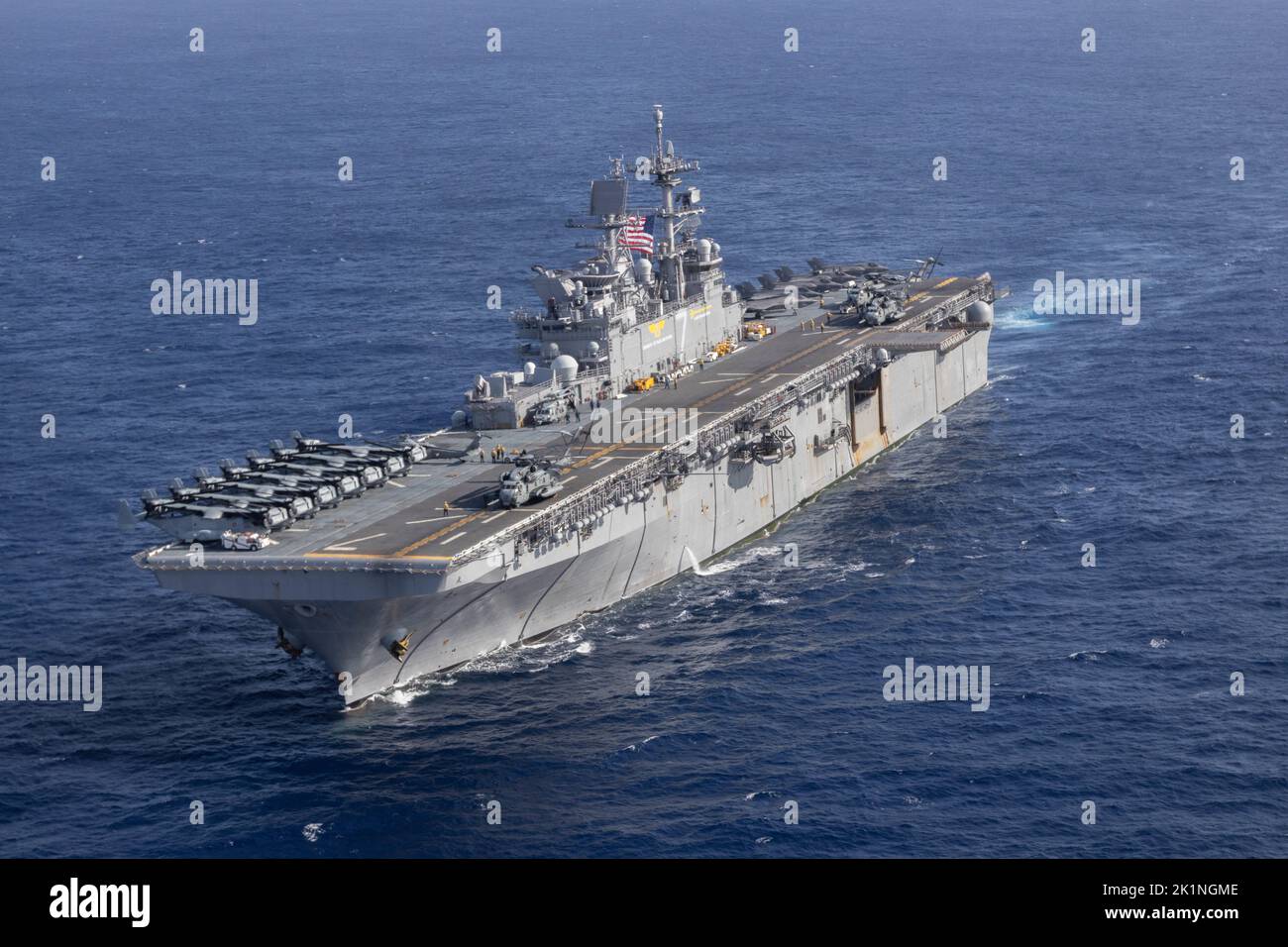
China Unveils the *Sichuan*: A Leap Forward in Naval Power
In a significant development that reinforces its status as the operator of the world’s largest navy, China has officially launched the *Sichuan*, its most advanced and largest amphibious assault ship to date. The unveiling took place during a grand launch and naming ceremony held on Friday, marking a pivotal moment in the modernization of the People’s Liberation Army Navy (PLAN).
A Marvel of Engineering
The *Sichuan* is an impressive vessel, boasting a full-load displacement of 40,000 tons, ranking it among the largest amphibious assault ships globally. The ship features a sophisticated dual-island superstructure and a flight deck that spans its entire length, showcasing the advanced design choices made by Chinese naval engineers. This robust design is not only about size but also reflects a strategic enhancement of the operational capabilities of the Chinese navy.
Modernization of the Chinese Navy
The introduction of the *Sichuan* is seen as a crucial step in the ongoing modernization efforts of the Chinese navy, which have been in progress for over a decade. According to a statement from *China Bugle*, a media outlet affiliated with the PLAN, the *Sichuan* will play a pivotal role in advancing the navy’s operational capabilities, particularly in far-seas combat scenarios. The ship is equipped with state-of-the-art technology that positions it to engage effectively in various military operations.
Advanced Features of the *Sichuan*
One of the standout features of the *Sichuan* is its ability to launch both fighter jets and unmanned drones, facilitated by an innovative electromagnetic catapult system. This technology represents a significant advancement in naval operations, allowing for quicker and more efficient deployment of aircraft in combat situations. Furthermore, the *Sichuan* is designed to support ground operations, capable of deploying landing craft and providing aerial support to troops on the ground.
In alignment with the operational capabilities expected of a modern amphibious assault ship, the *Sichuan* is also fitted with advanced arrester technology, enabling fighter jets to land on its deck—a complexity reminiscent of traditional aircraft carriers. This combination of launching and landing capabilities essentially broadens the tactical versatility of the vessel.
Continuing the Legacy of Amphibious Assault Ships
The launch of the *Sichuan* builds upon China’s earlier achievements in naval warfare, notably the amphibious assault ship *Hainan*, a Type 075 class vessel, which entered service in 2019. These recent milestones are indicative of China’s relentless pursuit to bolster its naval forces and extend its operational reach beyond immediate coastal areas. The trajectory of modernization is clear; just two years ago, China showcased its ability to launch fighter jets using electromagnetic technology from its domestically built aircraft carrier, *Fujian*, marking another significant achievement in its naval capabilities.
What’s Next for the *Sichuan*?
With its official launch complete, the *Sichuan* is slated to undergo extensive sea trials. These trials are a crucial step in ensuring the ship’s readiness for deployment, evaluating its performance and capabilities in real-world maritime conditions. The strategic planning behind the *Sichuan* includes its alignment with China’s long-term naval goals, which encompass upgrading the fleet’s capabilities and enhancing operational readiness for a range of missions.
The Future of Naval Warfare: Nuclear-Powered Aspirations
In addition to the *Sichuan*, researchers have revealed that China is actively working on the development of a nuclear-powered aircraft carrier. This ambitious project aims to further extend naval deployments, allowing ships to operate for longer periods without the need for refueling at land bases. The implications of such advancements could shift the balance of naval power, intensifying the competition in maritime capabilities.
A Sea of Challenges
As China continues to develop its naval fleet, it faces the formidable challenge posed by the U.S. Navy and its fleet of 11 nuclear-powered aircraft carriers. The U.S. maintains a strategic presence in crucial regions worldwide, including the Asia-Pacific, which is a significant theater for both nations. However, China’s impressive pace in expanding its navy, alongside its constant introduction of new capabilities, presents an ongoing challenge that could shape future military dynamics in the region and beyond.
Conclusion
The launch of the *Sichuan* marks a defining moment in the evolution of China’s naval capabilities, showcasing a commitment to modernization that could redefine the landscape of naval power. With advanced technology, strategic foresight, and a clear mission to fortify its maritime strength, China is positioning itself as an increasingly capable force in global naval operations. As the *Sichuan* prepares for its sea trials, the world watches closely, aware that the tides of naval warfare may be shifting.
This rewritten article expands on the original, providing detailed sections and maintaining a journalistic style. The HTML format is structured with headings for readability and presentation.

